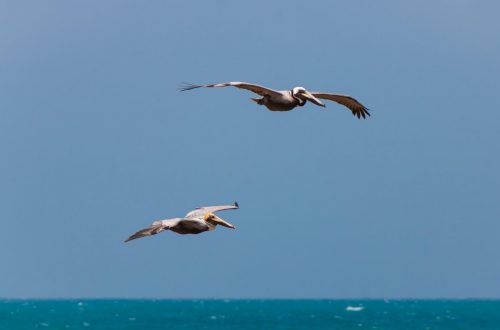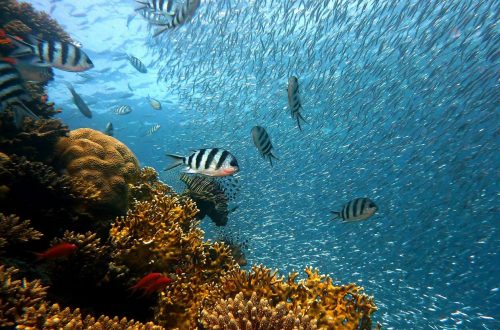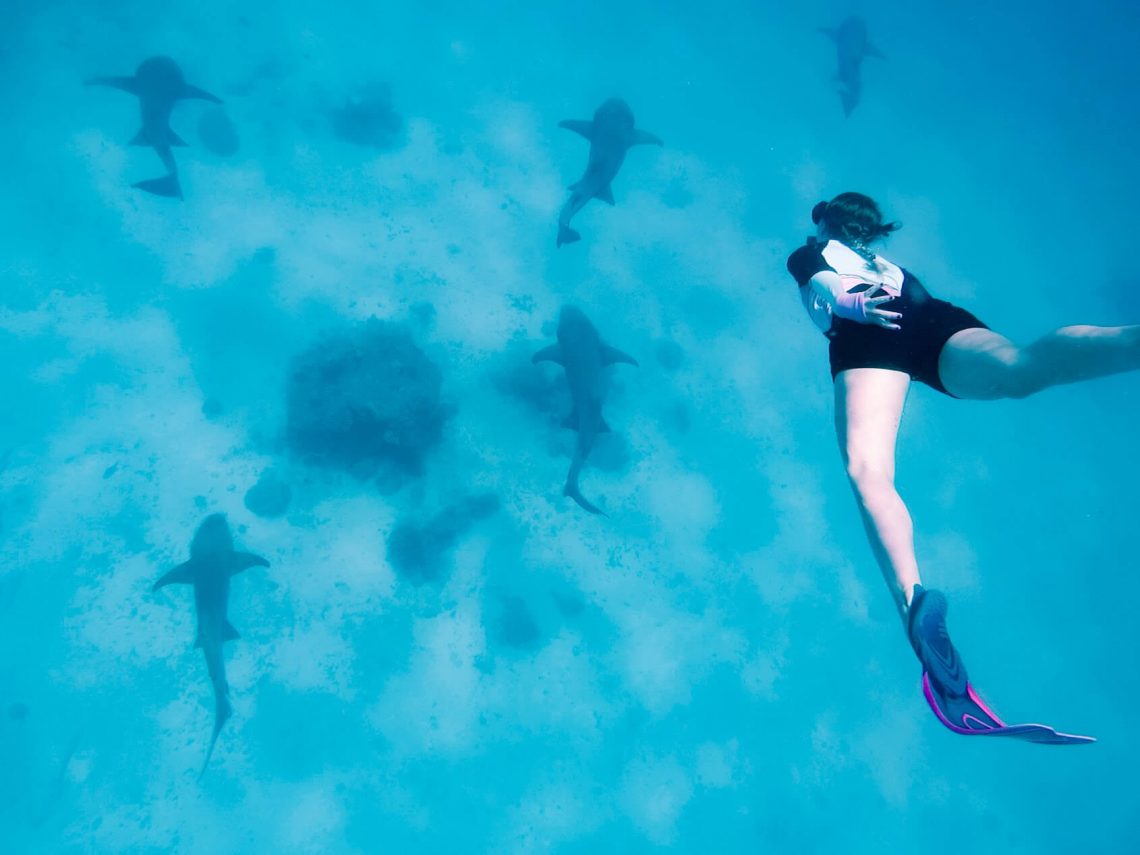
Snorkeling Equipment: A Beginner’s Guide
Getting to Grips with Snorkeling Equipment
To the untrained eye, snorkeling equipment can seem like something of a minefield.
At first glance it might just appear to be a mask with a tube attached, but once you start to look more closely, it becomes clear that there’s far more to it than that. Deciding what is best for you can be a challenge.
If that’s you, we are here to help with a complete beginners guide to snorkeling equipment.
What to Wear
Let’s start simple- what are you going to wear when snorkeling?
Well the answer probably depends on where you are going, the sea temperature and the weather, but regardless of the answers to those questions, there’s one item you’re always going to need…
Swimming Costume
It might sound obvious, but you’re going to need that trusty old swimming costume.
For me personally, when snorkeling, a swimming costume is preferable to a bikini as there are no bulky parts like clasps and ties. This comes in handy when you want to wear something comfortably over the top. It’s also less likely to get caught on anything and come undone.
My personal favourite brand for swimming costumes is Batoko. There are no affiliate links, sponsorships or deals here, just a good old-fashioned recommendation. This brand makes all their pieces from recycled plastic and I love their bold animal prints. They might be pricey but they are good quality and I’ve never looked back!
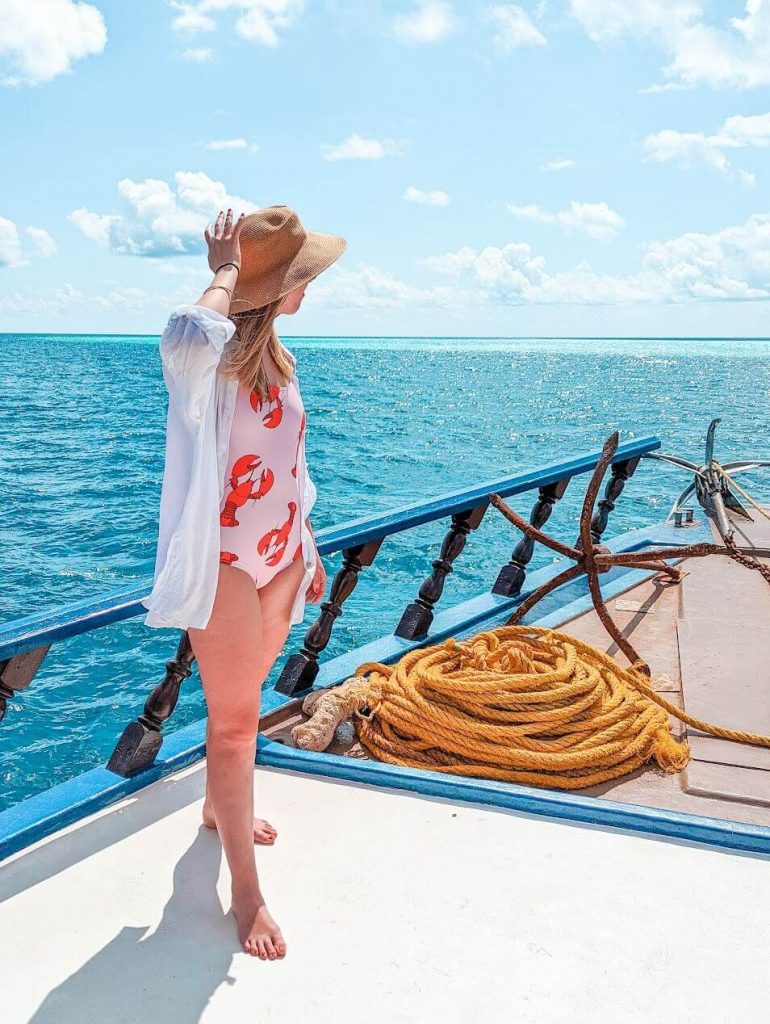
Rash Vest
So here’s my number one snorkeling tip: wear something over your swimming costume, no matter how warm the water.
In those tropical waters, this is probably going to take the form of a rash vest.
Think about it. When snorkeling, you’re going to be spending the majority of your time at the surface with your back facing up toward the blazing sun. You’re in the cool water so you barely notice as those UV rays gently turn you to a crisp.
Take it from someone who spent a few sleepless nights, with a back so sunburnt it hurt to lie down- you’re gonna want that rash vest.
It doesn’t need to be anything fancy. You can even just throw an old t-shirt over your swimming costume, but bear in mind that these can flap about and get quite heavy in the water.
I personally have used these ones from Amazon and they have served me well.
Shorts
Down a similar vein, a set of swim shorts never go amiss. Burnt butt cheeks can be particularly uncomfortable to sit on and especially if you’ve got a lengthy flight to look forward to on the way home.
These could be any shorts you don’t mind getting a bit wet and salty. However, again, I’d recommend some close fitting ones which aren’t going to create drag in the water. Some cycling shorts would do, or I found these ones to be excellent.
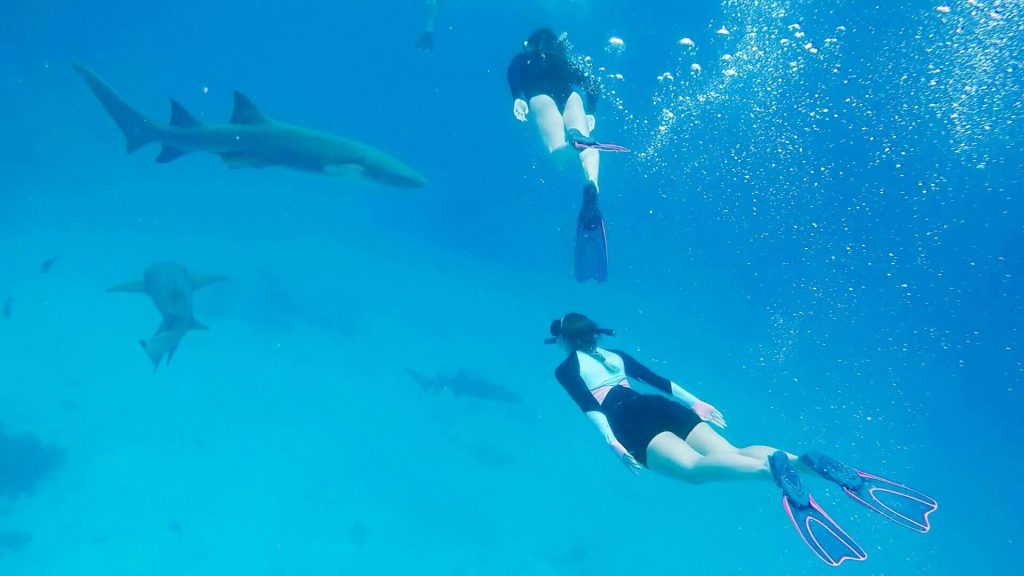
Wetsuit
What’s What?
The question as to whether or not you need a wetsuit, and which kind, depends where you are going.
You have a few options.
A “shorty” wetsuit is exactly as it sounds- a wetsuit with legs that end at the thigh. It might have short or long sleeves but this is really a matter of preference. The neoprene (material) is fairly thin. These are one step up from a rash vest and are typically worn in warmer conditions.
A full suit covers your arms and legs entirely, but will usually leave your hands, feet and head exposed. Gloves, boots and hoods are available if you’re particularly chilly or likely to be spending a long time in the water.
The thickness of the suit usually ranges from about 2-7mm. The colder the water, the thicker the material you’ll be wanting.
What Should I Go For?
So which one do you choose?
As I said, a lot depends on the temperature of the water. Here, you’ll find a fantastic summary table of the range of temperatures each option is suited to.
However, if you, like me, struggle to really imagine what those temperatures mean, I’ll try to give you a bit of context.
Tropical waters such as the Indian Ocean in places like the Maldives, can stay consistently around 25-30°C. You will probably find a rash vest and shorts more than sufficient. A wetsuit would likely be too warm.
However, places like the Atlantic and Pacific can definitely be chillier! You might want to think about investing in a wetsuit as part of your snorkeling equipment.
Sea temperatures on the UK’s south coast in summer are usually 14-18°C in summer, so you’re looking at a full suit, around 3mm in thickness. However, in the winter it’s more like 8-10°C. You’ll want to upgrade to at least a 5mm suit, probably with the full set of boots, gloves and hood.
The Great Barrier Reef can be 24-30°C; Sharm el Sheik, between 22-31°C depending on time of year; and similar temperatures are seen in the Galapagos and the Caribbean [link coming soon] to name a few.
I have taken my data from this website, where it’s simple to put in your own location and find out the year round averages.
Technical Equipment
Mask
The main choice you need to make as a beginner snorkeler is whether to opt for a traditional mask or a full face mask.
Most people will go for the traditional as it’s the most readily available. If you are borrow equipment from a hotel or tour provider, this is likely what they will offer you.
Traditional Mask
These will either have one single pane of glass, providing you with a really wide field of view, or two panes of glass, one for each eye. Mostly it’s a matter of personal preference. One thing which might sell you on the two pane is the option to have corrective lenses in your mask.
The most important factor is obviously going to be fit. You can find a comprehensive guide to preventing your mask from leaking by clicking here.
Full Face Mask
If you’re feeling a bit nervous in the water or the thought of only being able to breath through your mouth is uncomfortable for you, a full face mask might be the thing for you.
It allows you to breathe normally in the water. They are not really designed for diving down under the water but are perfect for swimming along the surface.
This might be a good starting point if you’re looking into full face masks.
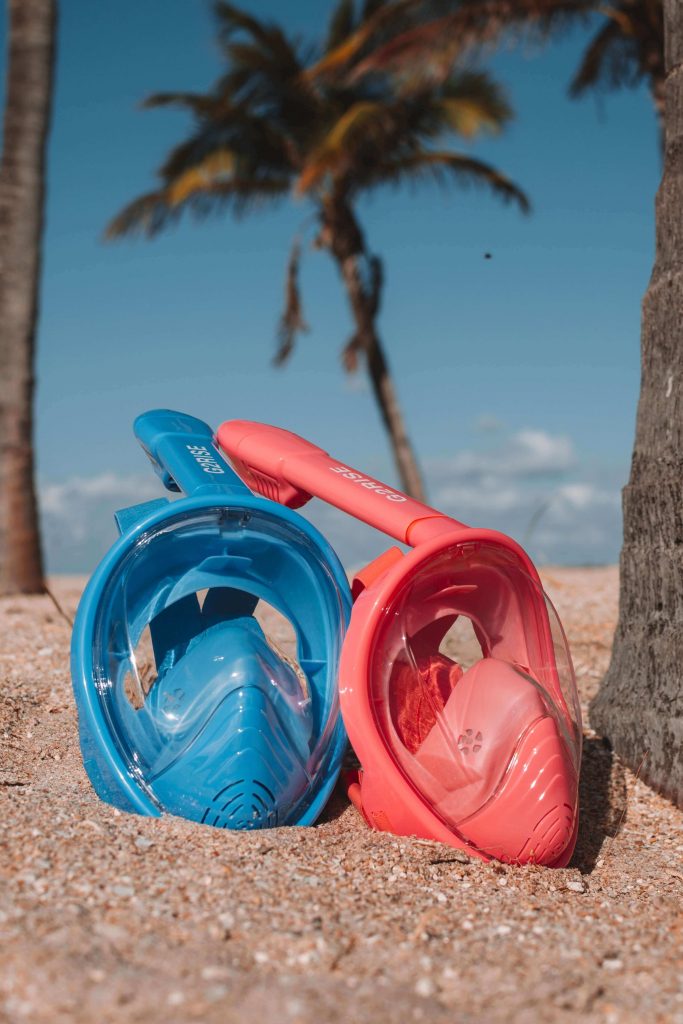
Snorkel
If you’ve decided on a traditional mask, you’re probably also in the market for a snorkel. This is something which, in my opinion, can make a BIG difference to your experience.
You have three options, and to me, on this one, there’s a clear winner.
Traditional Snorkel
In my opinion, clearly the worst snorkel.
This is literally just a tube. As a result, as soon as you dive under the water, it fills up with water. Allegedly, you can clear it with a short, sharp, exhale when you surface, but in my experience, this has never worked. I’ve always had some residual salty sea water left when I’ve taken my next breath in and been left coughing and spluttering.
It is the cheapest option though, and if you’re planning on staying at the surface, maybe this will suffice for you.
Semi Dry Snorkel
The next level up is a semi dry snorkel.
This offers a splash guard at the top which should protect you from some wave action. It doesn’t seal up the snorkel in any way, so is really still for use on the surface, but might be a good halfway option.
Dry Snorkel
I think the clear winner here is the dry snorkel.
Whilst it’ll be a marginally pricier option, I think it’s worth it. A dry snorkel contains a floating object which moves to the top on the snorkel as you dive down, sealing it tight. When you return to the surface it moves down again, allowing you to breathe in air. It’s no more complicated to use than any other snorkel except that it needs to remain upright to function properly.
Amazon has some great options available. I have personally used and can recommend this one which comes as part of a set. Cressi models like this are more expensive but are consistently well reviewed if you’d rather trust the masses!
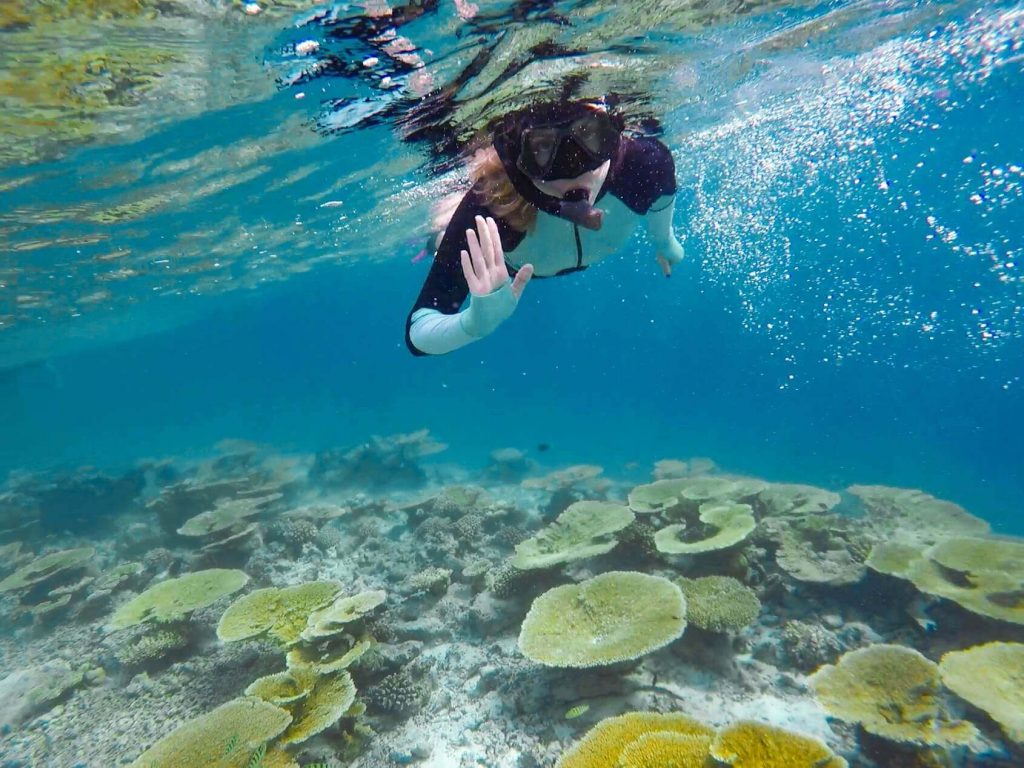
Fins
When looking for snorkeling equipment for beginners, fins can seem like the hardest thing to navigate. They are definitely the item which has the most options available and can also have the highest price tag attached.
Don’t be fooled by their deceptive simplicity. Fins can be highly specialist pieces of equipment, so I am going to attempt to advise here based on the needs of a beginner only. If you’re an experienced freediver, your needs may be very different.
Do I Actually Need Fins?
Fins are useful for snorkelers in particular because they give you extra power in your kick. As you are likely to be in open water where you might be swimming against a current. They give you more speed and stability than you’d have without, which is important when being buffeted by waves, and allow you to exert less effort in your swimming so you can go further for longer. It’s also really helpful if you’re wanting to dive down to look at a reef.
For most beginner snorkelers, you’re going to want a full foot fin that slips on like a shoe. This is as opposed to one with a strap around the back which is mostly used for SCUBA diving. Make sure you get a good fit. If it’s about to slip off as you swim it’ll hinder your experience, not enhance it!
For an adult beginner snorkeler, look for fins of about 20-25 inches. This is enough to give you some power in your strokes, without requiring too much energy input.
This is a good option which ticks all the boxes for a beginner snorkeler.
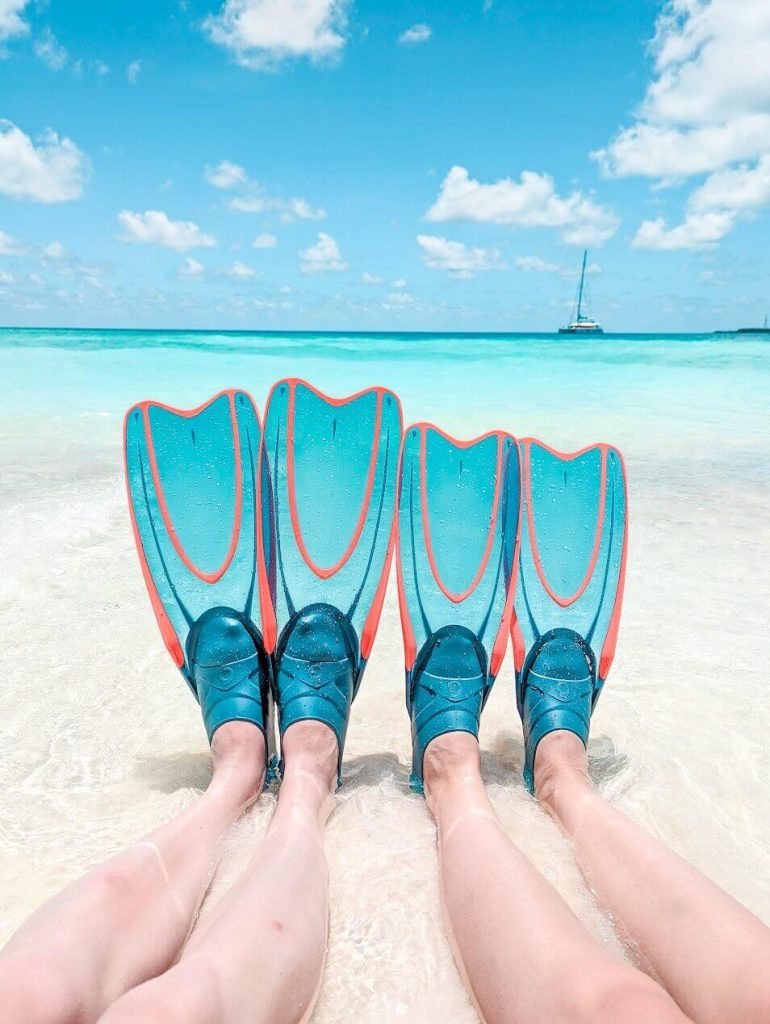
Do I Need My Own Snorkeling Equipment?
For many beginner snorkelers, the question of whether or not to buy your own equipment can be tricky. It’s an additional cost on your trip and these items can be bulky to pack.
For those who just want to dip their toes in (no pun intended) with no intention of continuing, probably not. Most tour providers offering snorkeling excursions as well as hotels around popular reef locations will offer snorkeling equipment that you can borrow for free or for a small charge.
It’s worth noting, however, that what they provide will likely be a standard traditional mask and snorkel with no valve. Fins can be limited (or competitive) on sizes and you may find yourself with ill-fitting fins- arguably a far worse deal than no fins at all.
I personally like to at least have my own mask and snorkel, mostly so I can guarantee I have a valve to allow me to dive down!
The choice is yours, but if you’ve made it this far, it’s sure to be a well-informed one!



